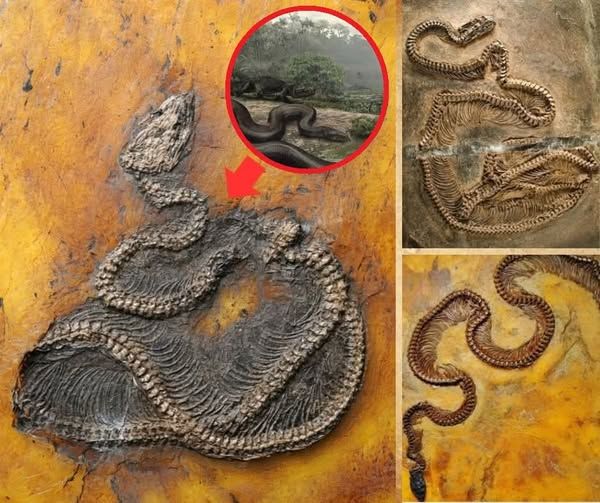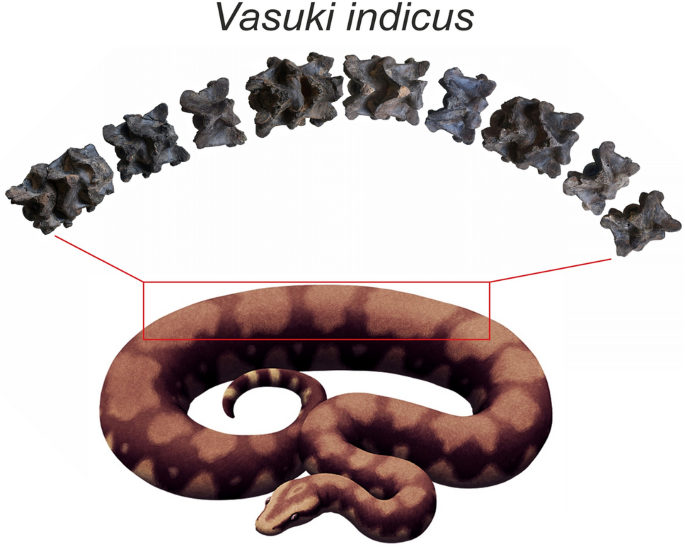Vasuki indicus: discovery of a ~ 47 million-year-old giant snake in India

A new, ancient species of a snake dubbed Vasuki indicus, which lived around 47 million years ago in the Kutch region of Gujarat State in India, was one of the largest snakes to have ever lived, suggests new research published in Scientific Reports. The new species, which reached an estimated length of between 11 and 15 m, was part of a distinct lineage that originated in India.
Sunil Bajpai and Debajit Datta from Indian Institute of Technology, Roorkee describe fossils recovered from the Panandhro Lignite Mine, Kachchh, Gujarat, dating to the Middle Eocene period approximately 47 million years ago. The new species is named Vasuki indicus after the mythical snake around the neck of the Hindu deity Shiva and in reference to its country of its origin, India. The authors describe 27 mostly well-preserved vertebrae, some of which are articulated, which appear to be from a fully-grown animal. The vertebrae measure between 37.5 and 62.7 mm in length and 62.4 and 111.4 mm in width, suggesting a broad, cylindrical body. Extrapolating from this, the authors estimate that V. indicus may have reached between 10.9 and 15.2 m in length. They further suggest that the large size of V. indicus made it a slow-moving, ambush predator akin to an anaconda/python that lived in a coastal swamp.

The authors identify V. indicus as belonging to the now extinct Madtsoiidae family which existed for around 100 million years from the Late Cretaceous to the Late Pleistocene, and lived in a broad geographical region including South America, Africa, Europe, and India. Vasuki belongs to a snake lineage that evolved in India when it was an island continent during the Late Cretaceous and Palaeocene times. After India collided with Asia around 50 million years ago, the newly created land routes made it possible for these snakes to cross over into north Africa through southern Eurasia. Furthermore, based on the dependence of a snake’s internal body temperature to that of its environment, the large size of Vasuki led the authors to estimate an average temperature of ~ 28 °C for the Middle Eocene tropics.
This new research clearly highlights the importance of the Indian fossil record in understanding the evolutionary history of snakes, making it necessary to continue further studies.










